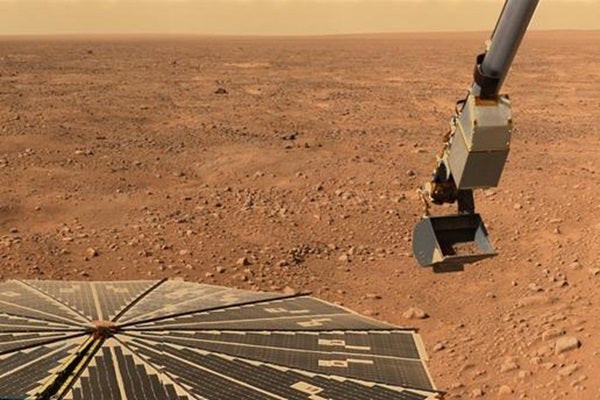NASA’S Phoenix Mars Lander entered safe mode late Tuesday, October 28, in response to a low-power fault brought on by deteriorating weather conditions. While engineers anticipated that a fault could occur due to the diminishing power supply, the lander unexpectedly switched to the “B” side of its redundant electronics and shut down one of its two batteries.
During safe mode, the lander stops non-critical activities and awaits further instructions from the mission team. Within hours of receiving information of the safing event, mission engineers at NASA’s Jet Propulsion Laboratory (JPL), Pasadena, California, and at Lockheed Martin in Denver sent commands to restart battery charging. It is not likely that any energy was lost.
Weather conditions at the landing site in the north polar region of Mars have deteriorated in recent days, with overnight temperatures falling to -141°Farenheit (-96°Celsius), and daytime temperatures only as high as -50°F (-45°C), the lowest temperatures experienced so far in the mission. A mild dust storm blowing through the area, along with water-ice clouds, further complicated the situation by reducing the amount of sunlight reaching the lander’s solar arrays, thereby reducing the amount of power it could generate. Low temperatures caused the lander’s battery heaters to turn on October 28 for the first time, creating another drain on precious power supplies.
Science activities will remain on hold for the next several days to allow the spacecraft to recharge and conserve power. Attempts to resume normal operations will not take place before the weekend.
“This is a precarious time for Phoenix,” said Phoenix Project Manager Barry Goldstein of JPL. “We’re in the bonus round of the extended mission, and we’re aware that the end could come at any time. The engineering team is doing all it can to keep the spacecraft alive and collecting science, but at this point survivability depends on some factors out of our control, such as the weather and temperatures on Mars.”










